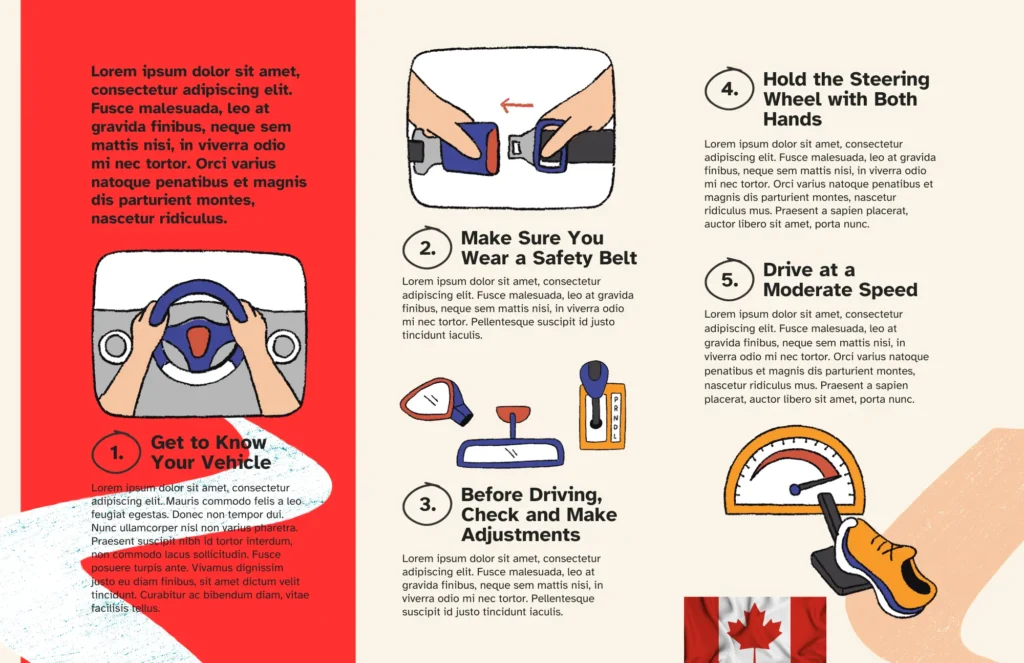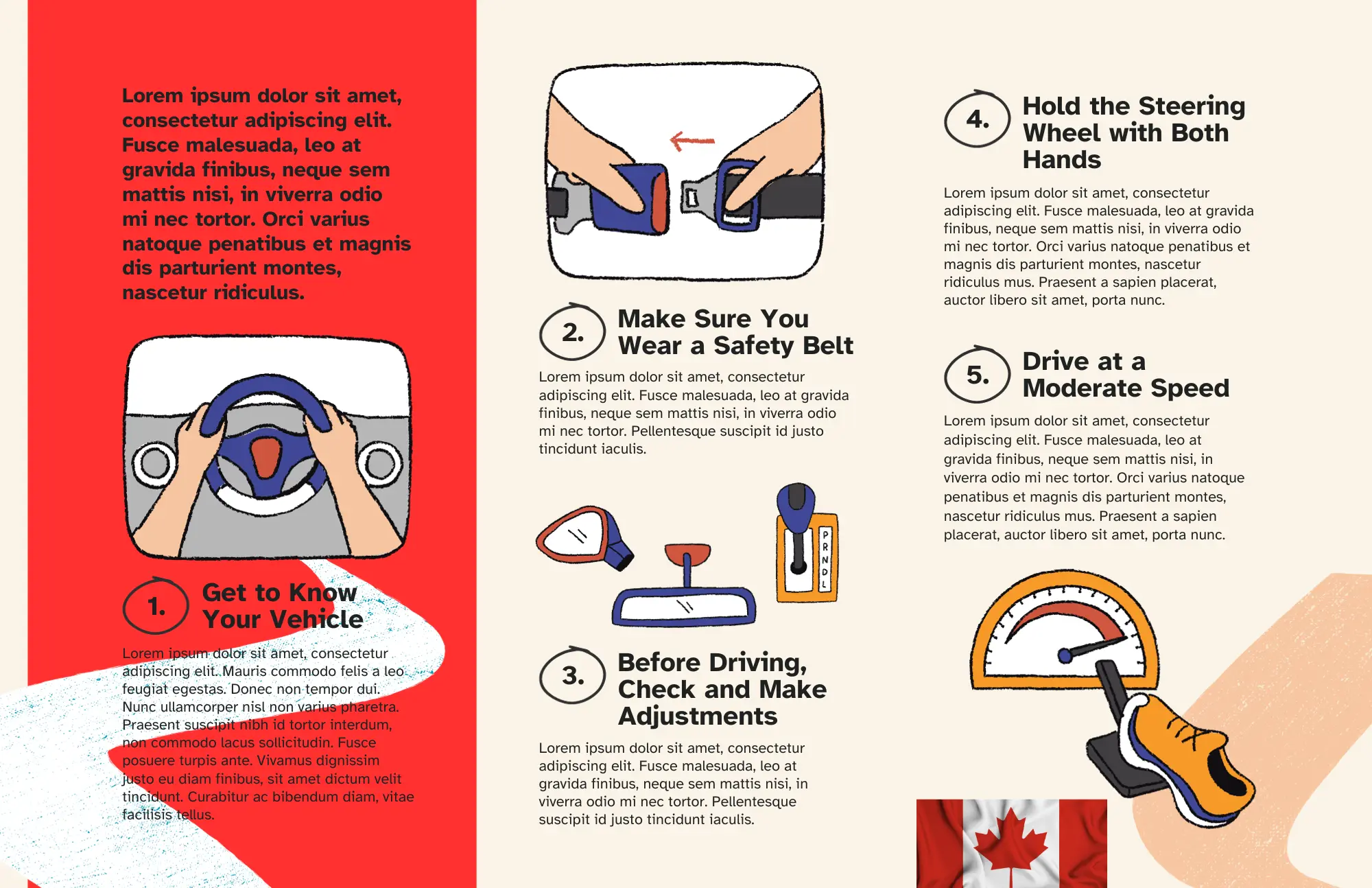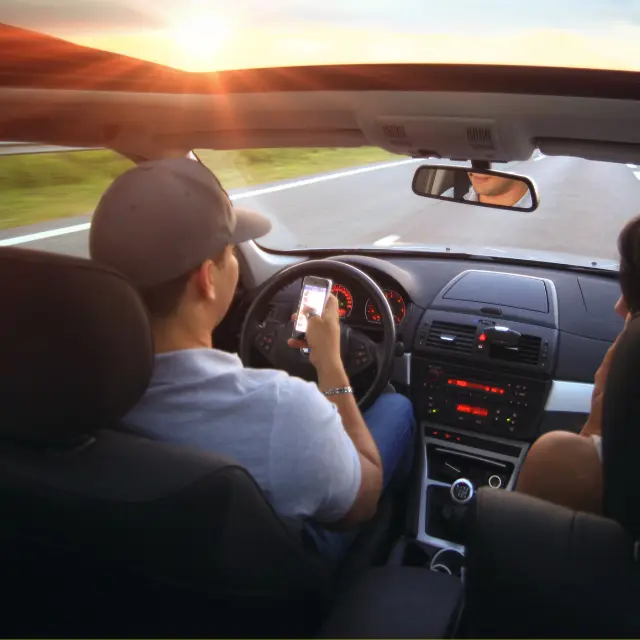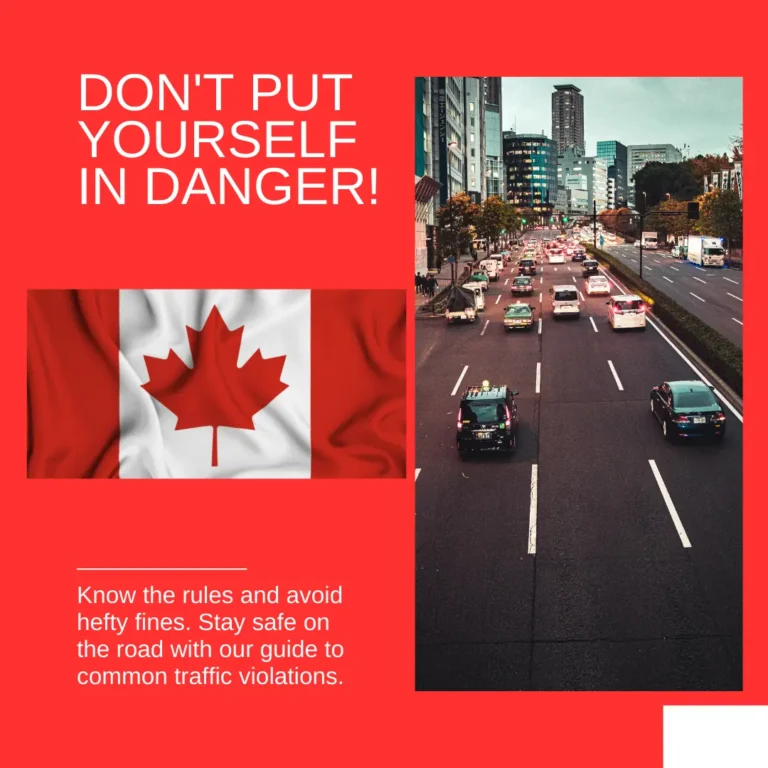Canada differs by domain, territory and distracted driving.
Canada differs by domain and territory, each of which has its own laws and penalties for distracted driving. In general, it is illegal to use a cell phone while driving, and there can be fines for violating this rule.
Distracted driving
Any activity that diverts the attention of a driver from driving is considered distracted driving. The risk of road accidents and injuries is high when this behavior occurs. Distracted driving can include a variety of activities, including using a mobile phone, eating in the car, changing the radio or conversing with passengers.
Many jurisdictions have passed laws to discourage and address distracted driving, including Canada. These laws prohibit handheld devices from being used while driving and can include penalties and fines for violators. Specific regulations and penalties can vary from province to province.
To promote road safety, it’s vital that drivers are aware of local laws on distracted driving and follow them. In addition, establishing good driving habits, such as setting up navigation before driving and using hands-free technology, can make driving safer for all.
Distracted driving is defined as:
The three major types of distracted driving are visual, cognitive, and manual. These are just a few examples of things that could distract you from driving.
Texting on a phone or using it is one of the most dangerous and common distractions while driving. The driver’s attention is diverted by visual, manual, and cognitive distractions as he or she looks at the phone and reads messages. Using food and drink while driving may cause cognitive and manual distractions. Taking your eyes or hands off the road while you adjust the radio volume or use the entertainment system in the car can cause distracted driving. Programming GPS devices or using smartphones for navigation may divert your attention. Engaging in conversation with passengers can cause cognitive distraction, particularly if the discussion is heated. Applying cosmetics, combing the hair, and other grooming actions while driving could cause both visual and manual distractions. Reading books or newspapers is also hazardous while driving. Viewing videos in a car or on a handheld device can be distracting. Driving while daydreaming or lost in thought can result in any circumstance. Interacting on touchscreens or with voice-activated controls can cause distraction while driving.

Stats on Abstracted Driving
The number of distracted drivers who cause collisions in Ontario has increased by two-fold since 2000.
Ontario’s data on crashes from 2013 shows
Drivers who are abstracted with their phones have four times higher crash rates than drivers who are much more focused on the road. A distracted driving smash-and-crash causes an injury every 30 minutes
Penalties and Fines of using mobile phones in Canada
Here are some fines that can be imposed for driving while using a mobile phone. These fines could have changed since my last update. It’s important to verify the latest regulations in the province or territory.
- Ontario In Ontario, fines can range from $615 up to $3,000. Demerit points are also possible to add to your driving record.
- British Columbia In BC, the penalty for driving with a hand-held device is $368 and 4 points will be added to your record.
- Alberta As per my latest knowledge update, the fines for driving while distracted in Alberta could be as high as $287 and you may also be given demerit points.
- Quebec In Quebec, the fines for driving with a hand-held device can be between $300 and $600. There may also be demerit point assessments.
- Nova Scotia In Nova Scotia, fines can range from $233.95 up to $579.95, with four demerit points added to your driving record.
Demerit Point System Canada
The demerit point systems in Canada vary by province and territory, each with its own set of rules and penalties. Here’s a table outlining the demerit point systems in each Canadian province and territory:
| Province/Territory | Demerit Point System |
|---|---|
| Alberta | – Demerit points are not issued, but driving infractions may result in fines and license suspensions. |
| British Columbia | – Points range from 2 to 10 depending on the offense. |
| – Accumulating 4 or more points triggers a warning letter. | |
| – Accumulating 8 or more points may result in a license review. | |
| Manitoba | – Points range from 2 to 10 depending on the offense. |
| – Accumulating 5 or more points triggers a warning letter. | |
| – Accumulating 10 or more points may result in license suspension. | |
| New Brunswick | – Points range from 3 to 10 depending on the offense. |
| – Accumulating 7 or more points triggers a warning letter. | |
| – Accumulating 10 or more points may result in license suspension. | |
| Newfoundland & Labrador | – Points range from 2 to 14 depending on the offense. |
| Northwest Territories | – Demerit points are not issued. |
| Nova Scotia | – Points range from 2 to 10 depending on the offense. |
| – Accumulating 6 or more points triggers a warning letter. | |
| – Accumulating 10 or more points may result in a license review. | |
| Nunavut | – Demerit points are not issued. |
| Ontario | – Points range from 2 to 7 depending on the offense. |
| – Accumulating 2 to 8 points may result in a warning letter. | |
| – Accumulating 9 to 14 points may result in a license suspension. | |
| Prince Edward Island | – Demerit points are not issued. |
| Quebec | – Demerit points are not issued, but driving infractions may result in fines and license suspensions. |
| Saskatchewan | – Points range from 2 to 20 depending on the offense. |
| – Accumulating 12 or more points may result in license suspension. | |
| Yukon | – Demerit points are not issued. |
Please note that demerit point systems may change over time, and it’s essential to refer to the official government sources or contact local authorities for the most accurate and up-to-date information. Additionally, the consequences of accumulating demerit points may vary beyond license suspension, including potential impacts on insurance rates and driving privileges.
Trainee drivers
You will be fined the same amount as drivers who hold A-G licenses if you are guilty of distraction while driving. You will not obtain a demerit point.
You’ll be facing longer suspensions instead of drawbacks.
- A 30-day suspension of your driving privileges for the first offense
- A 90-day suspension of your license for a subsequent conviction
- The cancellation of your license and removal from Graduated Licensing System (GLS) for the third conviction
- To get your license back, you would have to redo all the GLS Program
Conclusion You should be aware that the fines may change and there could have been new regulations introduced since I last updated. For the latest information about distracted driving in Canada, always refer to official and recent sources, such as the websites of provincial or territorial governments. To ensure safety, authorities and law enforcement may also enforce the rules
How many demerit points do you lose for mobile phone?
Provinces or territories issue the demerit points. However, the penalties may change with time. For the most current and accurate information, you should check your local regulations.
An overall example is:
Ontario fines drivers who use a hand-held device when driving.
British Columbia has a four-point penalty for driving with an electronic device.
This is just an example, as the system of demerit points can vary in different provinces and territories. The traffic laws, penalties, and fines are always subject to changes. Drivers should stay up-to-date on the most recent regulations.
What can mobile phones detect?
The mobile phone camera is a versatile device that captures visual information by detecting light, colour, and movement. These cameras are equipped with sensors that convert light into digital information. This allows them to create photos and videos. A camera’s resolution, which is measured in Megapixels, will determine its ability to capture fine details. The autofocus feature allows the camera’s lens to be focused automatically. Some models also offer more advanced features, such as depth-sensing or manual focus. Mobile phones cameras are able to detect faces and focus properly on the individuals within a picture. They may also include object recognition technologies for better scene composition. These cameras are able to adapt to different lighting conditions and have features like HDR. Mobile phone cameras, while powerful for sharing and capturing visual content, aren’t designed to perform specialized tasks such as thermal imaging. This highlights their use in daily photography and videography.







